Reading and watching Shakespeare requires different skills. Reading requires an ability to understand Middle English and personalized interpretation of emotion. In films, director and actors have interpreted the text for you. This makes the meaning easier to understand initially but removes freedom of imagination. When studying Shakespeare, I prefer to analyze both text and film for a broader understanding and more enjoyment of the work.
The ideal way to understand Shakespeare is to read it aloud. However, most Shakespeare plays are long, my voice gets tired. So I try and find an audiobook version. This captures my interest better and allows me to follow along and look at all the footnotes that explain certain portions. An unabridged audiobook works better than reading along with a movie because directors often cut large sections of text in the interest of time, and visual cues can change your interpretation more than pure audio. When annotating, it is important to pick the most important sections, because not every word Shakespeare wrote was vital, some of it was filler. If you look up a synopsis of the plot, you can get a general idea of the major plot points. When you come across a major plot point, there is often a soliloquy. This is what I spend my time on. Shakespeare obviously spent time crafting these speeches and his word choice is important. In dialogue, you only have so much choice, so it is less intentional, and therefore less important.
Despite suggestions that annotating margins is the best way to analyze a text, I cannot bring myself to blaspheme. So, when analyzing these soliloquies, I find an online copy and use computer software to annotate it. This includes, highlighting, commenting, and modifying text (bold, italic). I focus on the words explained in the book, repeated or rhyming words, metaphors, similes and alliteration and anything with significant punctuation (!, ?). I also write the whole thing in my own words. These techniques allow me to focus on key components, understand the meaning and contemplate Shakespeare’s choices. I find these annotation methods to be very effective and I deem them to be successful if I learn or notice at least one new thing that I hadn’t caught just by reading the passage.
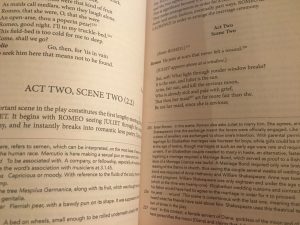
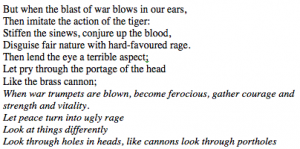
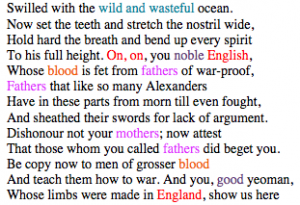

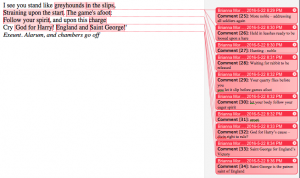
Annotating a film is very different. The focus shifts from Shakespeare’s text to artistic interpretation. Director’s choices about which words to add or remove, which character speaks the lines, tone, presentation, inflection, to whom the words are addressed and of course setting, costume design and other aspects are important to consider when analyzing a film adaptation. In depth analysis is better suited to intentional choices about major plot points and soliloquies rather than required dialogue and storyline continuation. Directors have two choices when doing Shakespeare. They can remain as close to traditional Shakespeare as possible, using costumes, sets and acting that reflect what would have been present in that time period. Or the director can choose to modernize Shakespeare through music, setting, costumes, props, etc. These choices affect mood and meaning and can also provide some interesting insights into someone else’s interpretations of what they view as important or crucial to the storyline.
After finding an important soliloquy, I write Shakespeare’s original soliloquy in my own words. Then I compare the film version to the original revealing the changes, which can drastically affect the meaning. After analyzing textual changes, I note production choices such as setting, props, costumes, and music as well as how the actors delivered the lines, and to whom they were delivered. Any deviation from traditional Shakespearean style reflects a deliberate choice and these creative choices affect the mood and meaning. Comparing different film versions as well as the original version can reveal interesting aspects that I may have overlooked if I had only analyzed one source. Film analysis is more about appreciating different artistic choices when presenting another’s story rather than word choices made by the original author, as is the case with written analysis. Noting the artistic choices for portraying major plot points across various versions of the same text can deepen one’s understanding of the source material as well as give insight into different possible interpretations. I consider my film annotation to be successful if I identified a deliberate difference that changed some aspect of the meaning or interpretation.
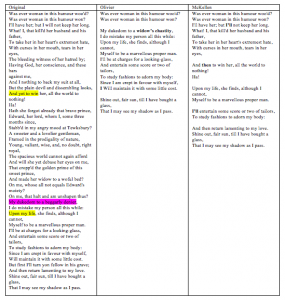
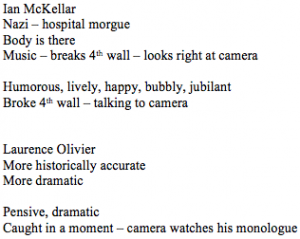
For both Shakespeare mediums, interpretation and analysis is easier with a focused area of interest. Allowing annotation to be guided by an overarching theme can provide direction for analysis. Various annotation techniques, starting with modernizing the Middle English, allows for successful analysis marked by the acquisition of new knowledge.
Leave a Reply
You must be logged in to post a comment.